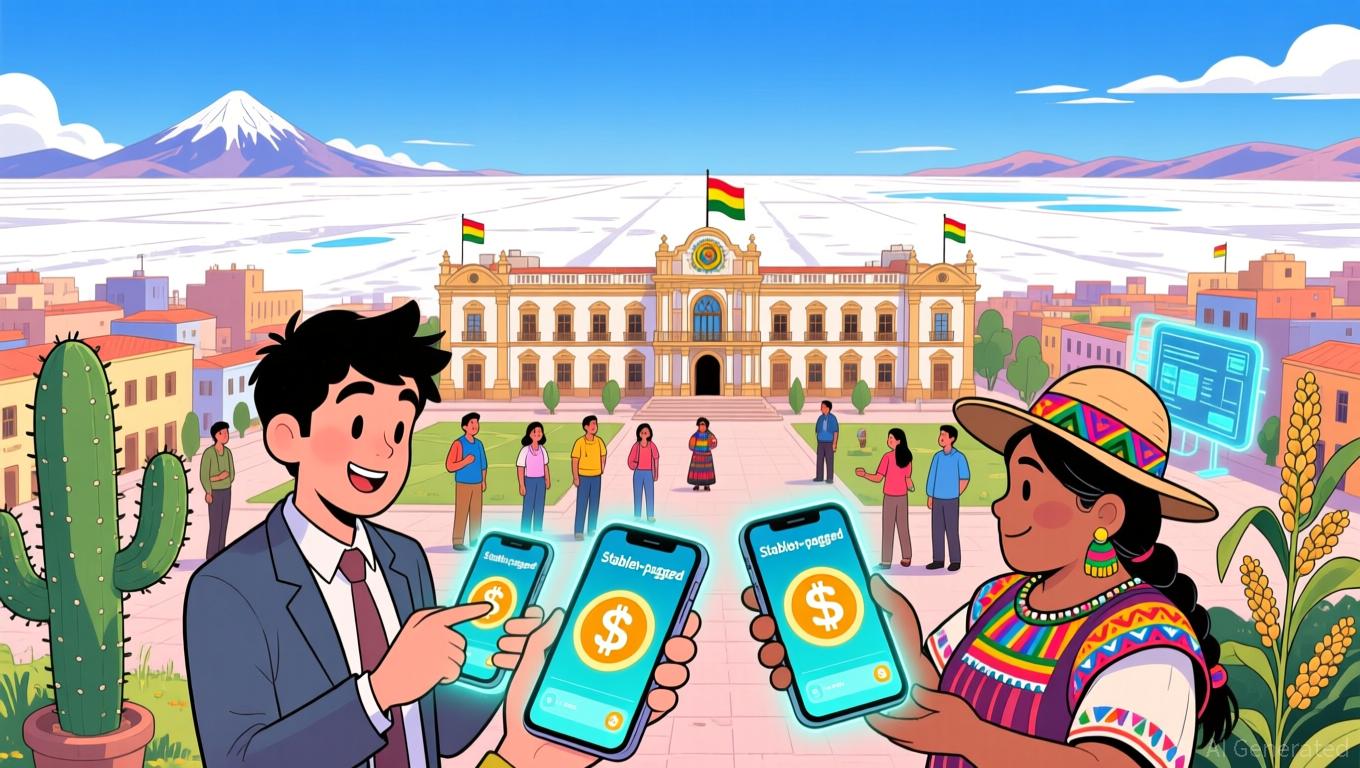Bolivia is shifting its financial strategy by embracing cryptocurrencies and stablecoins, ending a ten-year prohibition on digital assets. This significant policy change, revealed by Economy Minister Jose Gabriel Espinoza on November 25, 2025,
grants banks permission to provide crypto-related services
, including savings accounts, credit cards, and loans, with an initial emphasis on stablecoins such as Tether’s
USDT
. The government’s new direction seeks to combat persistent inflation, the weakening of its currency, and limited access to financial services,
making Bolivia one of the most proactive countries in Latin America
when it comes to adopting crypto-based financial solutions.
This decision comes after a notable increase in crypto usage following the June 2024 annulment of Resolution 144/2020, which had previously banned digital assets.
In the first six months of 2025, crypto transaction volumes soared
to $294 million—a 530% jump from $46.5 million at the start of 2024.
In the past year, Bolivia handled almost $15 billion
in crypto and stablecoin transactions, placing it 46th worldwide for adoption. This rapid expansion highlights the popularity of stablecoins as protection against the boliviano’s decline and as a practical tool for international payments amid a shortage of U.S. dollars.
This reversal in policy is driven by mounting economic challenges.
The boliviano has experienced average annual inflation
exceeding 22% in the year leading up to October 2025, and strict currency regulations along with shrinking foreign reserves have prompted both businesses and individuals to turn to stablecoins.
Leading firms such as Toyota and BYD now accept USDT
for car sales, while the state-run energy company YPFB intends to use crypto for importing energy.
The administration also referenced regional competition
, pointing out that neighboring nations like Brazil and Argentina have already put regulated crypto systems in place.
A key element of the new policy is the official acceptance of stablecoins as legal currency for financial transactions.
Banks are now authorized to safeguard crypto assets
, allowing clients to open savings accounts, access credit, and secure loans backed by digital assets. This mirrors the model of Banco Bisa,
which already provides USDT custody
for international transfers.
The government stresses that stablecoins—linked to the U.S. dollar
offer consistency and dependability, in contrast to the price swings seen with
Bitcoin
.
Nonetheless, the transition is not without obstacles.
Regulators must develop strong anti-money laundering measures
, establish tax policies, and launch educational initiatives to address potential risks.
Public distrust remains significant
, as many Bolivians still associate cryptocurrencies with fraud or speculative trading. The Central Bank of Bolivia has started educational workshops to boost financial knowledge, but
widespread use will rely on building trust
in the reformed system.
Espinoza’s remark that “you can’t regulate crypto on a global scale”
, “so it’s best to acknowledge it and leverage its benefits” sums up the practical mindset behind these changes. By adopting stablecoins, Bolivia hopes to upgrade its financial infrastructure, lessen dependence on conventional banks, and attract fintech investment. If successful, this approach could become a model for other developing economies facing inflation and currency volatility, though
careful rollout will be essential
to prevent negative side effects.
